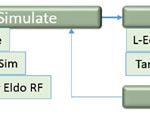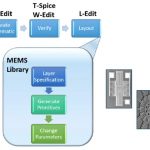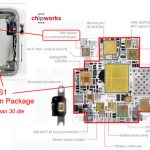You are currently viewing SemiWiki as a guest which gives you limited access to the site. To view blog comments and experience other SemiWiki features you must be a registered member. Registration is fast, simple, and absolutely free so please,
join our community today!
IoT edge device design means four domains – MEMS, analog, digital, and RF – not only work together, but often live on the same die (or substrate in a 2.5D process) and are optimized for power and size. Getting these domains to work together effective calls for an enhanced flow.
Historically, these domains have not played together … Read More
We spend an inordinate amount of energy tracking the big chip – the application processor – in a mobile device. As we’ve seen this space is coming down to a handful of players. A more interesting competition is heating up around the APU for the rest of chips needed to make a phone.… Read More
The development of leading edge semiconductor technology is incredibly expensive, with estimates ranging from a few to several billion dollars for new nodes. The time to develop a leading edge process is also a critical competitive issue with some of the largest opportunities awarded based on who is first to yield on a new node.… Read More
It was the very first time I attended the LETI days, even if I know the research center for many years. LETI was created in the 60’s, as the subsidiary of the CEA (France agency in charge of Atomic Energy) in charge of Microelectronic. Now, for more than 50 years, 2000 research engineers are working to develop technologies, systems … Read More
Following Moore’s Law down to 10 or even 7 nm labeled feature size demands US $ hundreds of millions of up-front investment, a very large design team and two or more years of development time. These parameters suggest that it only makes sense for very high volume applications to continue on the shrink path to increase SoCs’ functionalities.… Read More
When you’re thinking about “what can we do next”, you can think big or you can think small – very, very small. Robert Freitas at the Institute for Molecular Manufacturing (IMM) has such an idea – artificial red blood cells (RBCs). These would be nano-machines which could augment the oxygen and carbon dioxide carrying capacity of … Read More
For any invention, technical proof of concept or prototyping happens years ahead of the invention being infused into actual products. When we talk about 5nm chip manufacturing, a test chip was already prototyped in last October, thanks to Cadence and Imec. Details about this chip can be found in a blog at Semiwiki (link is given … Read More
On Monday morning on December 7, 2016 Greg Yeric of Arm gave an excellent and wide ranging plenary talk at IEDM entitled “Moore’s Law at 50: Are we planning for retirement?”. You can download Greg’s slide deck here.… Read More
With the industry abuzz about the Apple purchase of a Maxim Integrated fab as a potential R&D facility for MEMS design, it begs the question: is creating a MEMS device that easy?
MEMS technology is approaching the same fork in the road where digital design encountered LSI four decades earlier. … Read More
About 11 months ago, I wrote a piece titled “Money for data and your MEMS for free.” In that, I took on the thinking that TSMC is just going to ride into town, fab trillions of IoT sensors, and they all will be 2.6 cents ten years from now. Good headline, but the technology and economics are not that simple. This may be the semiconductor … Read More





